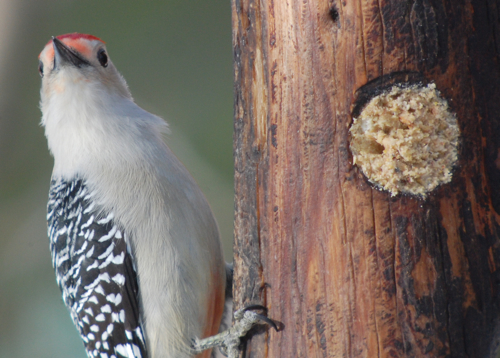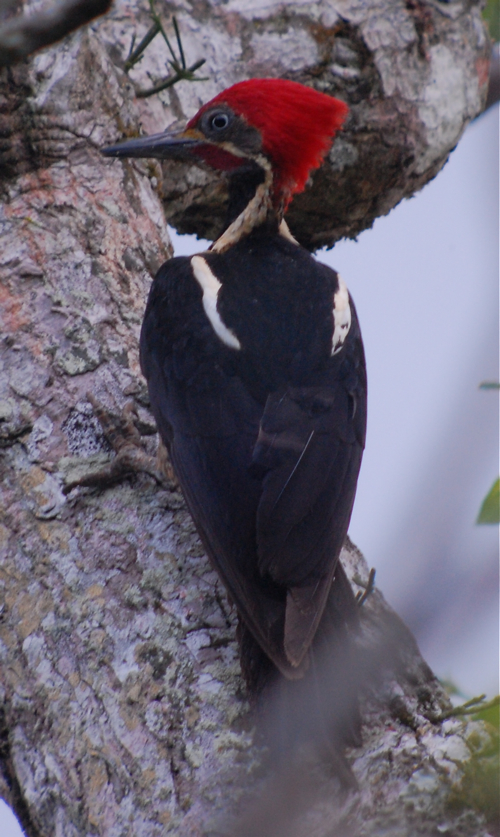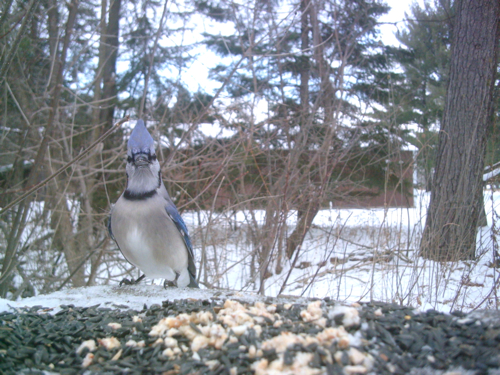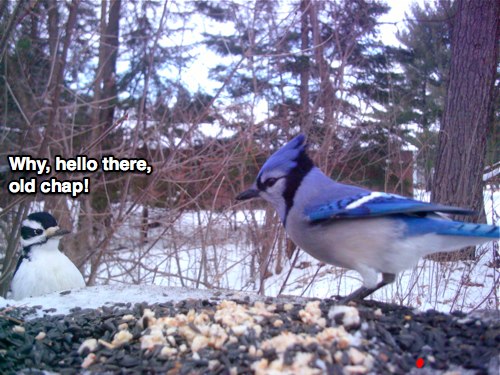I this meme posted on social media and it took me a full two minutes to realize that people were making a joke that one shouldn’t 30-40 olives directly from a jar for dinner. I’ve done this more than once and have no regrets. It’s kind of the same way I feel about popcorn for dinner. Don’t get me wrong, I love to cook, but I hate doing dishes.
Possible dating profile picture…one should know what they’re getting into with me, deer rib cages and sub-zero temperatures and all.
I make jokes on social media using #DatingInYourForties is weird. Although, I’m sure I’ve probably inspired a few #DatingABirderIsWeird after someone found a frozen blue jay in my freezer when they went to get some ice. It is very hard for my brain to process that birding can now be a potential romantic activity. I have been a great compartmentalizer my whole. You are my birding friends. You are my sci fi friends. You are my friends through Bill. You are my travel birding friends. You are my comedy writing friends. And so on and so forth. After being with a non birder for a couple of decades, birding just never fell into the romantic category of activities. “Life pie” can have a whole new meaning.
Of course, birding in winter in Minnesota is a strange test because your clothes for single digit temperatures aren’t exactly what I would call “sexy time clothes.” But good birds can make even the most awkward date a good time.
I know I’m not the first person to find themselves unexpectedly in a completely new life circumstance where none of the old routines apply and you can make up completely new ones. I decided for one thing to say yes to all the invitations. It’s great to only check with myself before I do something. It’s a liberating feeling to just say yes to a birding trip without checking to see if something non birding had been planned or that I’ve not been spending enough time at home.
Want to go birding tomorrow morning? I’m not working, yes.
What to go to Texas next month? I have lots of frequent flyer miles, yes.
Want to go to a cabin this weekend and do some birding? Oh, hell yes.
View from a cabin.
In Minnesota, many people have cabins for the weekend. You have to get used to a different schedule when you have a friend with a cabin. They generally are unavailable for city plans on the weekend from spring until autumn and forget holidays. Sometimes you can get invitations to cabins, either staying in them or pitching a tent outside. Cabins run the gamut from very basic with no shower but all the fishing tackle you could ever want and can be grand lodgings with air conditioning and hot tubs. Some are closed down for the winter, but a few have good heating and insulation and can be fun winter getaway.
When I moved to Minnesota I got a real education on cabin culture when I ran a wild bird feeding store. The company even came up with a seed mix just for cabin people called, “Cabin Mix” that people could grab on their way out of town and into northern Minnesota. We also carried rustic looking houses and feeders to match cabin decor, but honestly, the people really need something strong enough to withstand being knocked down by bears.
Friends with cabins have been gracious hosts when I learned that they have a cabin near a public blind with a lek. I’d rather roll out of bed and drive twenty minutes in the dark to get to a sharp-tailed grouse blind than leave the Twin Cities at 2am.
Fresh pileated woodpecker work outside a cabin.
I had an invitation to visit a cabin with some friends in January for snowshoeing on frozen lakes, birding and maybe some fat tire biking. These are fun weekends that generally involve cooking together as well. There was some very visible pileated woodpecker activity around the cabin and the next morning a pair took turns wailing into a tree.
The bird was so close…so photographable…except for the storm windows.
The cabin was fun for me—warm winter foods and nonstop pileated woodpeckers. Even if we never made it outside, I could watch my spark bird all day long. Although, I did feel super taunted by the bird. It was a great digiscoping opportunity, however storm windows keep your place snug and warm, but they can blur the heck out of photos.
However, the next day the cabin owner had removed the storm window and even carefully opened it when the birds returned so I could take all the photos. That is one trusting cabin owner to let out precious heat for a bird photography opportunity.
A clearer view of the pileated. There’s still a bit of heat shimmer from the heat escaping the cabin through an open window, but I still dig this picture.
The next day we headed to Sax Zim Bog for some birding. It was such a great time, not only for the birds but because I ran into so many friends who were birding up there for the day. Some were guides and when I’d pul over to watch birds, I’d find text messages that said, “Hey, did I just pass you over by the goshawk?” Yes, yes they had.
Hoar frost in the bog.
If you’ve never birded the bog and you have lots of lifers to get, especially owls then hiring a guide is a must. But if you have mostly seen the birds or only need one or two lifers, you can get by on your own with a stop at the visitor center and eBird. I knew of a reliable northern hawk owl and that was our first stop. The crowd of birders on the side of the road alerted us that the bird was indeed there.
A lovely way to start the day with a northern hawk owl who gives very little care to the birders below.
A female black-backed woodpecker (was a lifer for one of us) found on the way to the Sax Zim Bog visitor Center.
We were getting all the bog birds fairly easily, except for boreal chickadee, but that’s ok. Canada jays, rough-legs and barred owls are a nice consolation prize. We continued to run into people throughout the day, including one of my fellow park rangers who had just retired last fall. We ran into him at Wilbert’s Cafe and ended up having lunch together.
From there we headed out to a spot to look for three-toed woodpeckers. And I ran into John Jonas, one of my favorite wildlife photographers. He saw me driving my Prius around the bog, pulled over and asked, “You brought a Prius to the bog???” I smiled and said, “That’s how badass I am.”
We had quite a bit of hairy woodpecker activity and Jonas found the three-toed, but it was camera shy for me. I paused to get a slefie of all of us in the bog and it was at that moment a three-toed flew over all of us.
Beardy men at the bog.
What we lacked in three-toeds was made up for with a cool mammal experience. We did find a snowshoe hare hiding near the trail. I’ve seen them here and there, usually hopping away. But this was one of the closest encounters I’ve had with one and what a treat to see its winter camouflage in action!
We tried to finish the day with a great gray owl, but no one was having any luck. At sunset we drove the usual hangouts and it seemed that every ten minutes we’d pass one of the Sax Zim guides in their vehicle with clients trying to find a bird. We’d already seen many great grays and headed back to the cabin at dusk for some celebratory beer and whiskey. I have never seen so many ruffed grouse in the trees and bushes. It was clearly a bumper crop year and it explained why goshawks were easy to find in the bog this winter.
Craptastic owl photo!
We did manage one more species of owl that day. We drove past a snowy owl as we headed back towards Aitkin County. Not a lifer, but a cool bird.
Sunrise at the cabin.
On one page, a cabin just seem like a second home that you have to take care of: extra cleaning, yard work and other maintenance. On the other page, cabin life is seductive when you watch the sunrise over coffee while bacon sizzles on the stove a fox darts through the yard. You feel like you could give up work and just live hand to mouth up there forever.
But work calls. And friends in the city call insisting on lunch plans.




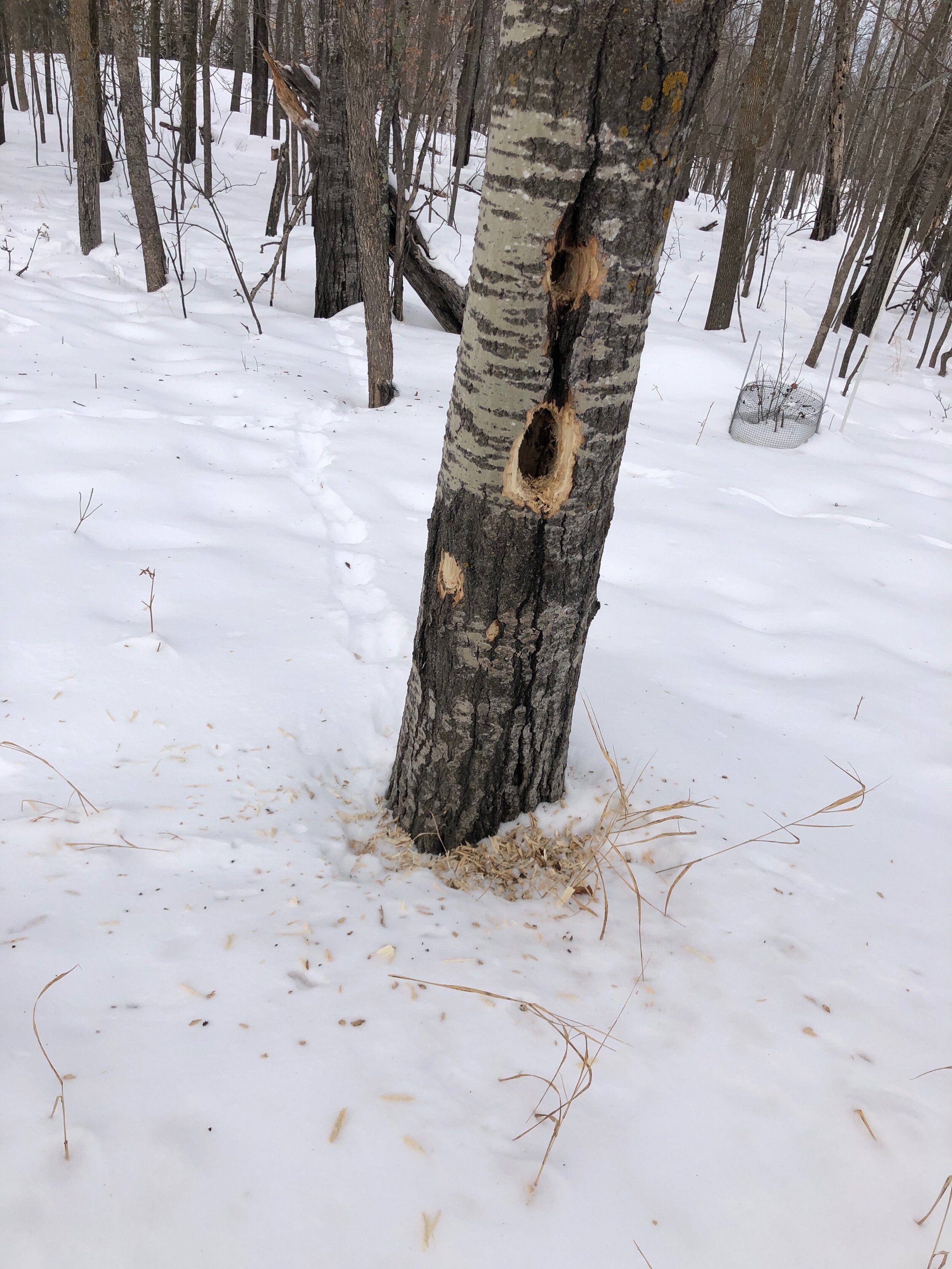





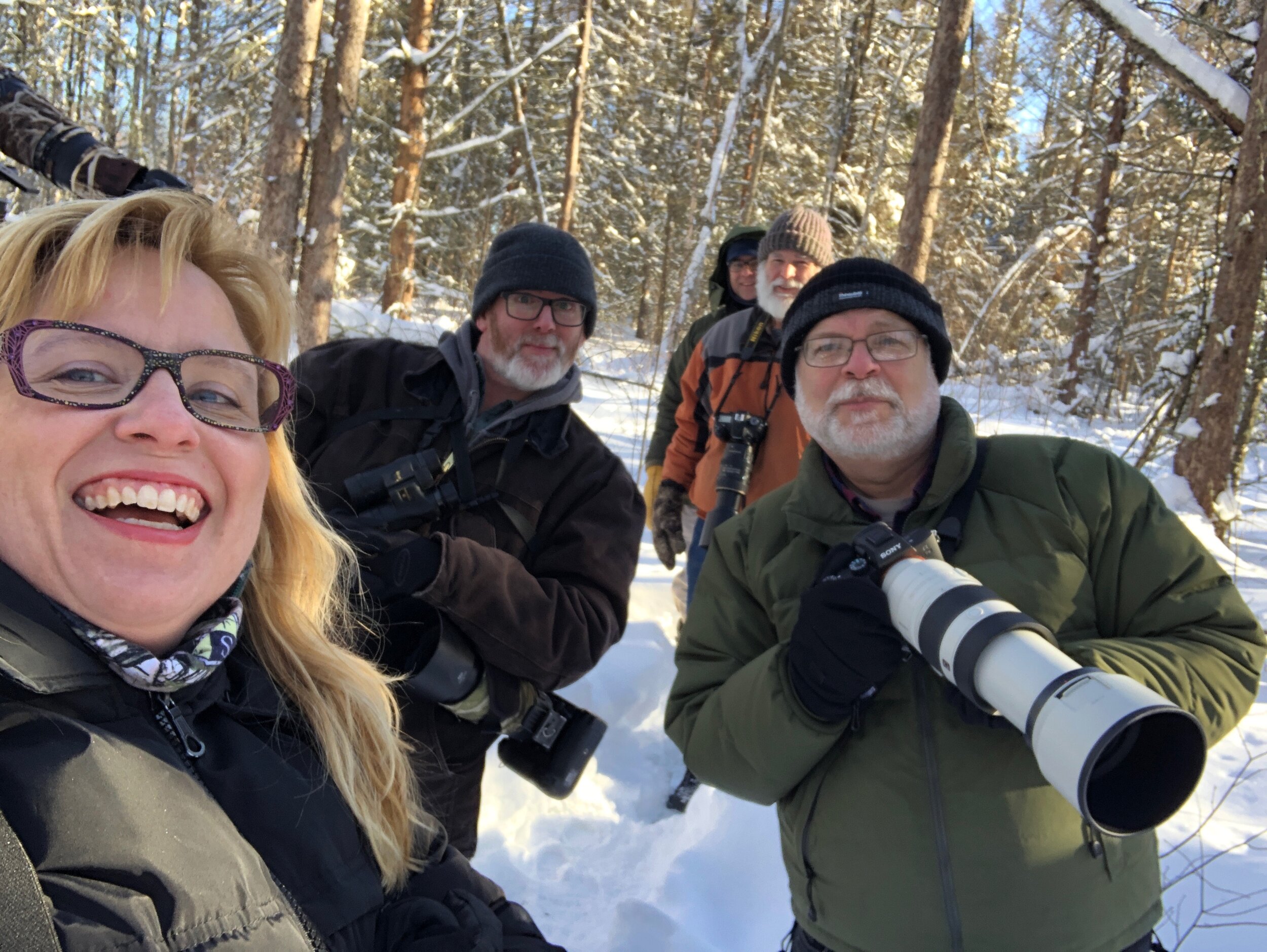
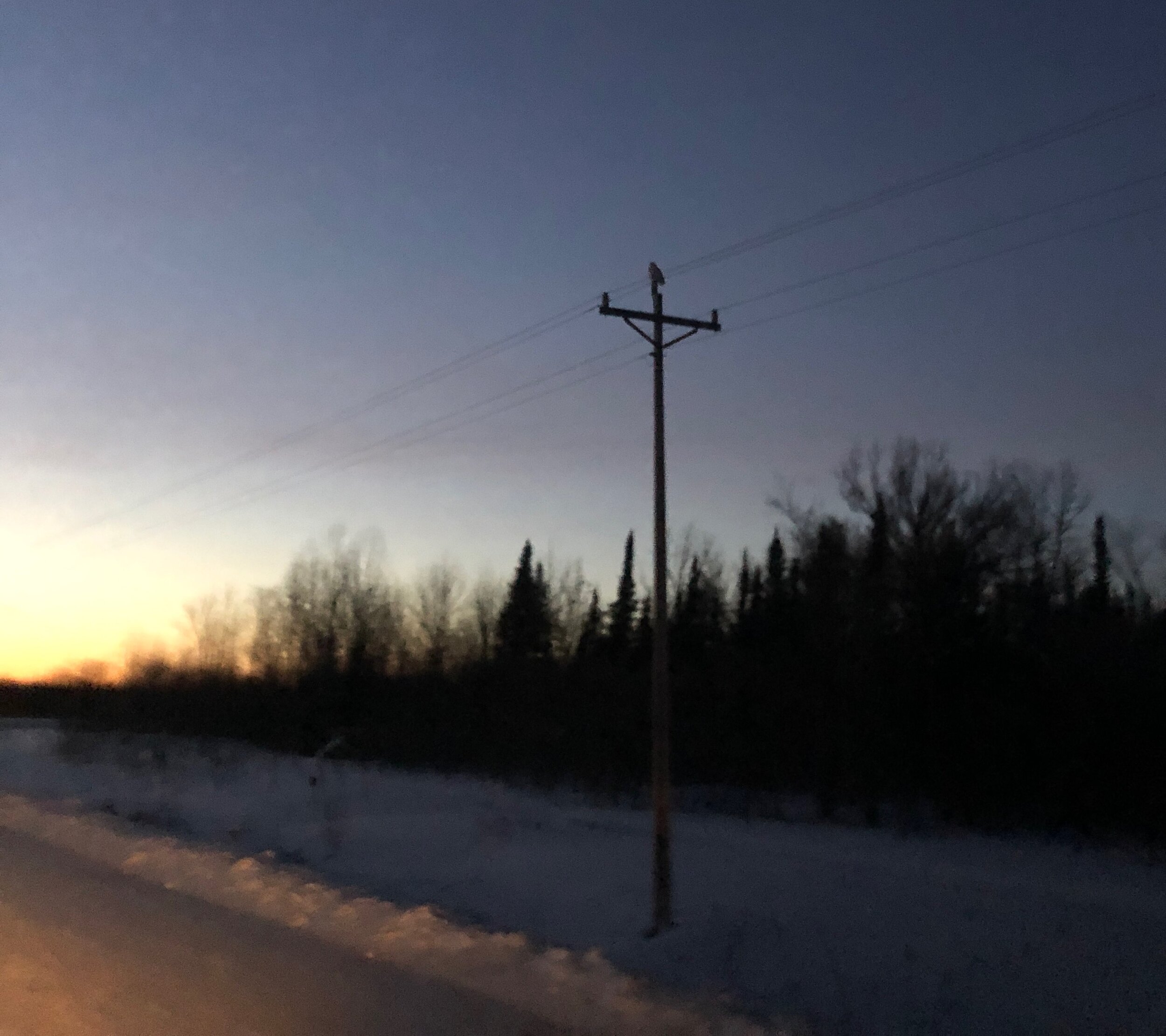









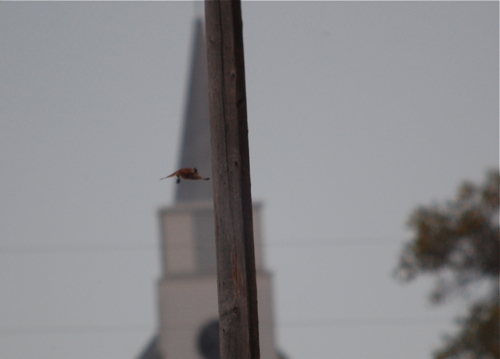
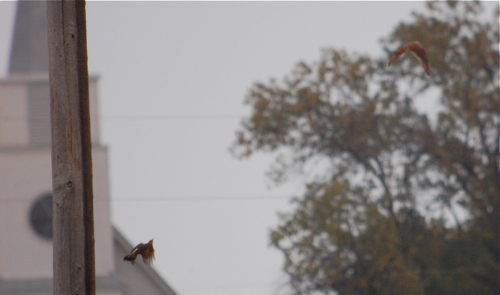
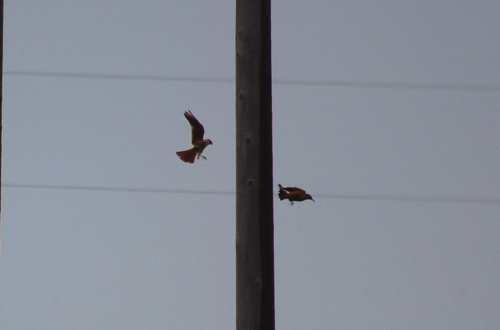
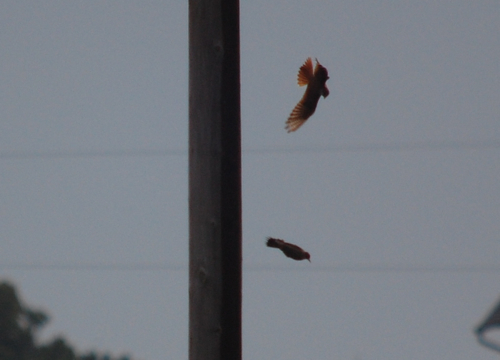
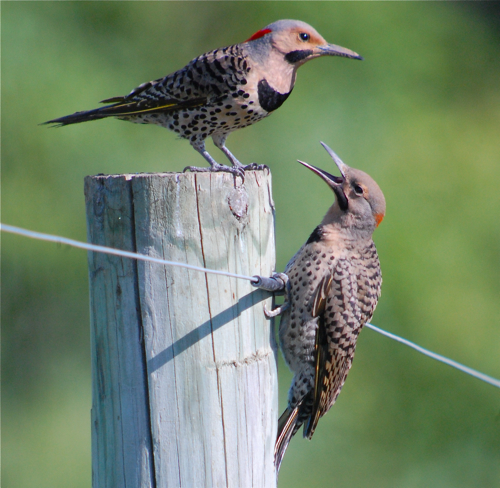 I saw some flickers learning the ways of the world on my bird surveys the other day. Even though that baby looks full grown, he's still hoping to be fed by the adults. Old habits die hard.
I saw some flickers learning the ways of the world on my bird surveys the other day. Even though that baby looks full grown, he's still hoping to be fed by the adults. Old habits die hard.

 This yellow-bellied sapsucker was feeding off the wells of sap near our beehives yesterday. The woodpecker was making the rounds to various tree trunks and I noticed that some yellow-rumped warblers would come down for the sap too. Remember, people in the northern US, if you see sapsuckers, hummingbirds are possible. They follow the sapsuckers up during migration, so if you have a sapsucker, put out your hummingbird feeder.
This yellow-bellied sapsucker was feeding off the wells of sap near our beehives yesterday. The woodpecker was making the rounds to various tree trunks and I noticed that some yellow-rumped warblers would come down for the sap too. Remember, people in the northern US, if you see sapsuckers, hummingbirds are possible. They follow the sapsuckers up during migration, so if you have a sapsucker, put out your hummingbird feeder.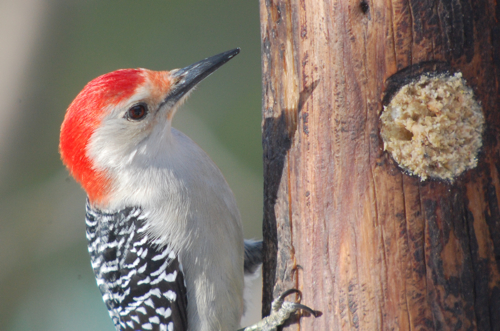 Male red-bellied woodpecker coming in for some suet dough.
Male red-bellied woodpecker coming in for some suet dough.